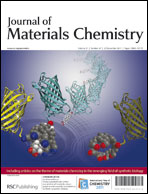Various compositions of gadolinium-praseodymium doubly doped ceria (GPDC) have been studied to elucidate the effect of two co-dopants in enhancing the ionic conductivity. A Kinetic Lattice Monte Carlo (KLMC) model of vacancy diffusion in GPDC has been developed, which uses activation energies obtained from DFT-calculations for vacancy migration in gadolinium-doped ceria (GDC) and praseodymium-doped ceria (PDC) as input. In order to identify the optimal composition of electrolyte materials for solid oxide fuel cells, three different classes of GPDC were studied; (i) Gd rich, (ii) Pr rich and (iii) equal Gd-Pr content. It is assumed that the Gd and Pr are 100% ionized to Gd3+ and Pr3+. KLMC simulations showed that GPDC compositions with ≈0.20 mole fraction to 0.25 mole fraction of total dopant content exhibited the maximum ionic conductivity. Among the three classes studied, Gd-rich GPDC is found to have the highest conductivity for temperatures ranging from 873 K to 1073 K. The optimal co-doped compositions were found to be slightly temperature dependent. Analysis of vacancy migration pathways for millions of jump events show that GPDC has a slightly higher number of next neighbor jumps, which seems to explain most of the reason why GPDC has a higher ionic conductivity than PDC or GDC. The current KLMC calculations present a novel approach to study doubly doped ceria, as so far the theoretical results for ceria-based materials have been limited to mono-doped ceria.

You have access to this article
 Please wait while we load your content...
Something went wrong. Try again?
Please wait while we load your content...
Something went wrong. Try again?


 Please wait while we load your content...
Please wait while we load your content...